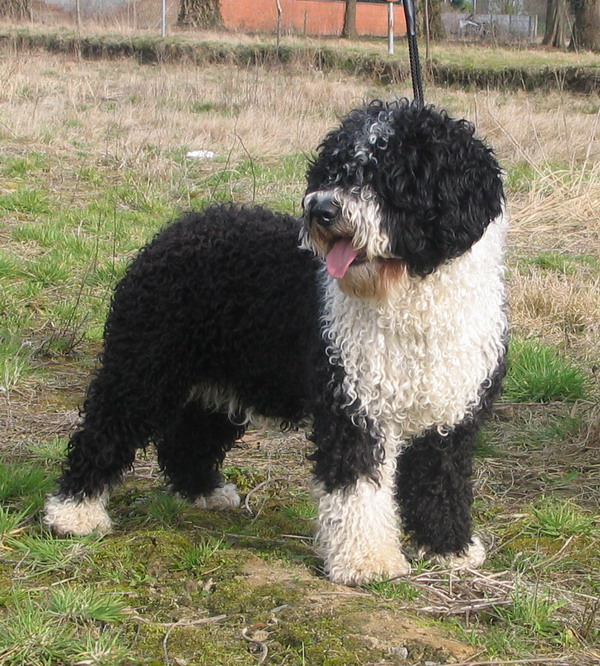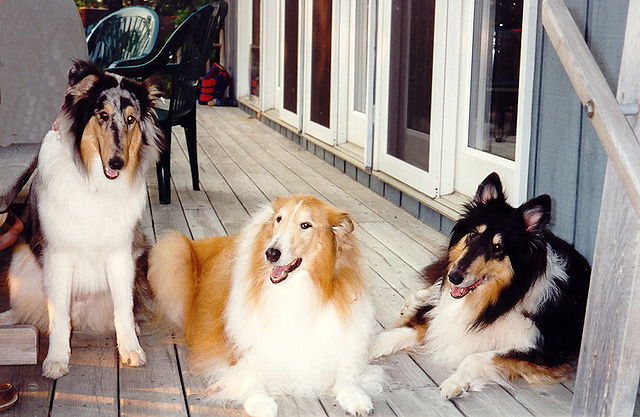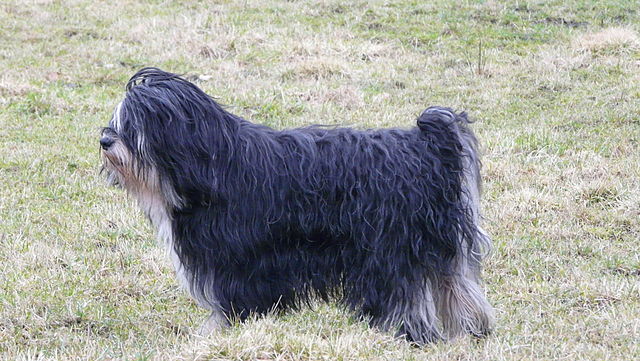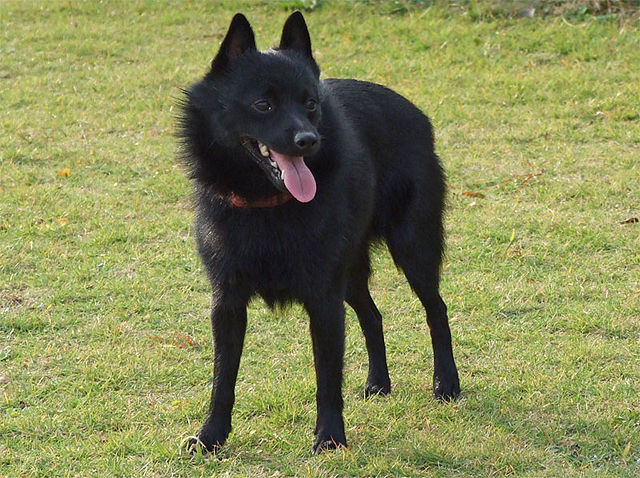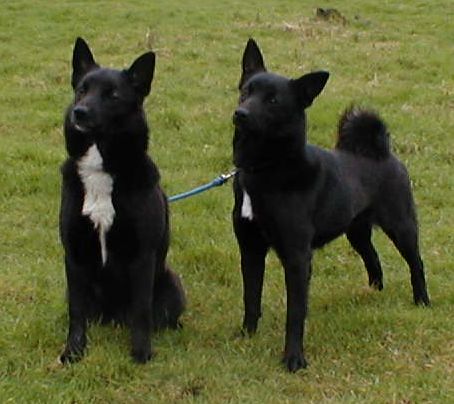The Canaan Dog from Israel developed on its own with very little influence from humans. As a whole, this breed was feral for quite a long time before being re-domesticated, so they understandably have more of a primitive temperament than other breeds. This means that they are sensitive to their environments, vigilant in new surroundings and remain ever-alert. Although sensitive, they are hardy and very adaptive to various climates and living situations. This is a breed that is paradoxically both independent yet still capable of performing a large number of jobs with people. Medium-sized, they are extremely agile, athletic and intelligent – yet at the same time can be difficult to live with.
This breed has excellent senses of sight, smell and hearing. They are very resourceful at hunting and manipulating their surroundings. Most Canaani love to dig! (Canaani is the plural form of Canaan). They can dig impressively sized craters big enough to fit their entire bodies, so gardeners must beware! They also have the tendency to roam, so a fence is a must. Despite having many primitive traits, the breed is clean and easy to housebreak.
The Canaan requires little grooming and will even groom himself like a cat! He will need to be brushed a few times a week but the short coat doesn’t tangle or mat like long hair. As a double-coated dog, this breed does shed heavily twice a year. Regular nail trimming and ear cleaning, along with the occasional bath, should be enough to keep the dog neat and tidy. The breed is also very healthy and is easy to keep in general.
Canaan Dogs are only moderately active and do not require a ton of exercise to keep them fit. In fact, many love their nap-times! A quick walk once or twice a day, or a good high-intensity romp in a fenced yard is usually sufficient for most dogs. This said, the breed has a lot of stamina and will enthusiastically accompany their owner on a good hike. Although they don’t need frequent walks, an owner should expect to provide exercise throughout the dog’s life. Canaani are a slow-maturing breed and live for a long time (14-15 years is the norm), so they will appreciate this easy-going exercise throughout their life.
The Canaan is affectionate and loyal to those whom he already knows (although not overly dependent), but doesn’t usually trust strangers. They may or may not trust the “stranger” in the future, even when introduced for the 20th time! This harkens back to the breeds’ primitive roots, where the most cautious tended to survive. When the breed was being re-domesticated, humans took advantage of their high territoriality and use them to guard their properties – a trait that is still ingrained in the breed today. They make excellent watch dogs, although aren’t known for being guard dogs. The breed has a very deep and commanding bark, which they will use whenever there is a change in their environment (read: they can be very vocal).
Canaan Dogs are responsive to training and usually learn quite quickly, although their independent nature makes them trickier than other breeds. They don’t like repetition and they may question “why” on a frequent basis. Once they’ve learned the commands, they may not always perform the given command – it all depends on how much training they’ve had, how much distraction is present, and the dog’s own personality. They require a trainer who understands independent, pariah breeds – and how to motivate them. Many flat-out won’t work for a trainer or owner whom they don’t respect. They are also more likely to succeed in types of training where the activity itself is the reward, such as herding trials or agility. This explains why many Canaani do so well in fast-paced dog sports, while still giving their owners a harder time in the obedience ring.
Canaani must be socialized from an early age so that they don’t become excessively fearful, and that socialization needs to continue several years into the dog’s life. Even with socialization, it is important to note that most Canaan Dogs will become very territorial around the age of two. They may consider not only your home their territory… but also your car and other places that you visit frequently. Some will consider you their property as well, and will become possessive when other people come near. This is why training is so important! The dog should never be allowed to become the dominant member of the family, and training will help to establish you as the leader rather than the dog. The Canaan’s particular temperament “quirks” makes him ill-suited for a novice owner.
Unfortunately, same-sex aggression is not uncommon in the Canaan Dog. The breed may not always get along well other dogs in general, but particularly in same-sex situations. It is not unusual for him to bully other dogs at the dog park, nor is it strange for him to outright attack a strange dog that comes into his yard. It is possible to live with multiple Canaani, but an owner will have better luck introducing opposite-sex dogs, altering one or both dogs, and/or having a large age gap between the animals. The breed also has a very high prey drive and is not safe around small animals (either pets or wildlife). These are traits of the breed’s feral nature, still very much in their genes. Cats may or may not be safe, but are often ok as long as they don’t run from the dog, triggering the prey instinct.
When raised with children, the Canaan gets along well with them, and tends to be very gentle. It is highly recommended that they be socialized to kids, however – just as they need to be extensively socialized with other people, places and things. As Canaani are a “soft dog”, they can be easily become hand-shy or nervous around kids that are too rough so the children must be taught to be fair with the dog.
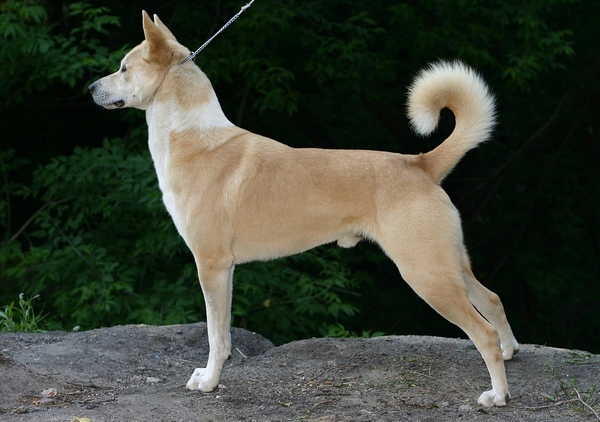
Photo By Canaan Dog, Hodowla Samorodok Hanaanahttp://www.ruscanaan.ru

